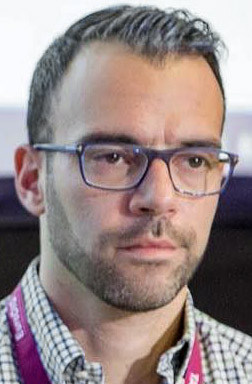

|
||
|
||
Almost a year ago, the National Telecommunications and Information Administration (NTIA) announced its intent to transition key Internet domain name functions to the global multistakeholder community. The process was officially kicked off at the ICANN 49 meeting. That was March 2014. And the place? Singapore.
Fast-forward a year later and we are again on our way to Singapore for an ICANN meeting. We are eleven months into the IANA transition process and a great deal of work has already been accomplished by the affected communities; thousands of emails have been sent and read, and individuals from the global multistakeholder Internet community have spent countless hours talking, deliberating and debating an IANA transition plan. So far, an impressive amount of information has been shared, many ideas have been generated amongst all interested parties, and concrete progress has been made towards developing a transition plan.
It is quite remarkable to see the interest and attention this process has generated. This should not be surprising. Those of us following the IANA discussions since the early days knew this moment would come. The US Government has long intended to phase out its legacy involvement in the management of the Domain Name System. This was clearly indicated in the 1998 White Paper, which stated: “Under the Green Paper proposal, the US Government would continue to participate in policy oversight until such time as the new corporation [which was what became ICANN] was established and stable, phasing out as soon as possible, but in no event later than September 30, 2000”.
The transition might have been announced later than expected, but between 2000 and now, we had:
Along the way, we have learned how to work closer together in a fast-paced, multi-faceted and multistakeholder environment—even as the Internet itself has grown and evolved tremendously. It is the case therefore that now, more than ever, the Internet community appears ready to apply what it has learned and collaborate in a meaningful and inclusive way.
Over the past eleven months, discussions on IANA have been happening around the world and on the Internet. And the forthcoming ICANN meeting will be no exception. This year’s ICANN Singapore meeting is packed with workshops and main sessions on the IANA transition process as well as issues of accountability. This demonstrates the commitment of all stakeholders’ interest in working towards the globalization of the IANA functions.
So, this ICANN meeting offers another opportunity to further strengthen collaboration and extend the bridges we have built already. It is a good opportunity for the community to revisit, reflect and deliberate on what has been discussed; it is a good opportunity to think of what challenges lie ahead.
Retaining the appropriate focus and asking the right questions will be key as we move through the various timelines set by the IANA Coordination Group (ICG), towards the September 30, 2015 deadline.
Like other stakeholders, the Internet Society will be present at the IANA discussions in Singapore. The ICANN agenda offers a variety of sessions on the IANA transition process (the ICANN schedule). Just preceding the ICANN meeting, on 6 and 7 February, the ICG is having its face-to-face meeting. And, shortly after the ICANN meeting—on February 25, 2015, at 14:00 UTC, we will be hosting a webinar seeking to continue the dissemination of information about the IANA process to as many Internet users as possible. Follow this link to get information about the IANA webinar.
Sponsored byDNIB.com

Sponsored byWhoisXML API

Sponsored byCSC

Sponsored byVerisign

Sponsored byIPv4.Global

Sponsored byRadix

Sponsored byVerisign
